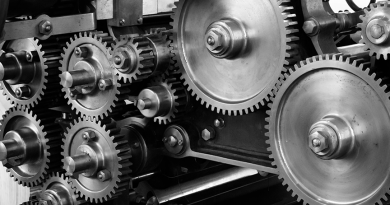The end of the beginning
Benjamin Zeeb is a founding shareholder at Alliance4Europe and the Director of the Project for Democratic Union.
1876
When Lady Liberty first arrived in New York City, the US Civil War had been over for a decade. She had crossed the Atlantic in a storm-battered and perilous journey, just like many hopeful Europeans had done before her, and would continue to do in the decades to come. Many would spend a good deal of their crossing below deck, destitute and sickly in the disease-ridden bellies of giant steamers, until the ordeal finally came to an end with a view towards Ellis Island and the sight of the torch at the end of her outstretched arm.
In 1876, a full 100 years after the declaration of independence started America on her path towards sovereignty and, ultimately, global dominance, many interpreted the gift, which had been welded in Paris with the help of Gustave Eiffel, quite literally as a passing of the torch.
In this version of the story, revolutionary Europe, where the core ideas on which the American republic rested, had been developed, had sent the statue to America in tacit recognition that it would be here, where these ideas would henceforth be most powerfully expressed.
The torch itself was displayed at the Centennial Exposition held in Philadelphia that same year, a symbolic reaffirmation that the place where the United States had been born a century prior, was, from now on, to be regarded as the rightful patron and preserver of democracy herself.
In retrospect, 1876 should not just be remembered as a mere centennial. The Statue of Liberty did not arrive at a moment that lends itself as a lens through which to look back at the days of the republic’s inception. Rather coincidentally, the Statue of Liberty took its place within the public imagination and iconography of the United States at a time that marked something just as profound as its beginning in Philadelphia on July 4th, 1776: It’s completion.
For America had not been completed by defeating the English. It had not been completed when the Constitution came into force in 1789. Neither was it expansion to the Pacific Ocean, nor the defeat of the Mexicans that marked its coming of age. It was only in overcoming her own worst instincts, the blatant mockery of the foundational principles that so many had bled and died for in the War of Independence, and that so many looked towards when they boarded ships bringing them to the new world, that America really came into her own.
The end of America’s beginning was marked by monumental conflict and violence. Europe would do well to remember this today. Deeply in need of a moment of completion ourselves, maybe we Europeans should ask for the statue back. We might need it to help us face what lies ahead.
America was forged in a war against herself
The America that the Statue of Liberty would go on to symbolize was forged in a war against herself. By 1876, the US Civil War had been won, the better angels of human nature had prevailed, the historic injustice of slavery had been abolished, and America graduated into something more substantive.
Setting the United States on a consistent, if uneven and painfully slow, trajectory towards ever greater social justice, had required a monumental struggle. It had pitted all that was noble about its founding idea against all that is petty and cruel and fearful and vain in the human character. Not until the Second World War, Europe’s own foundational struggle, would a more significant contest be fought and won by the forces of liberty, democracy, and justice.
The Reconstruction era quickly revealed that victory was not absolute. No victories ever are. But the new United States allowed for progress to make its slow way into the present and hopefully to continue beyond.
In 1876 this American progress, a key feature of its coming dominance, was to be seen everywhere. The World Fair was held in the US for the second time, Alexander Graham Bell patented the first telephone and Mark Twain published Tom Sawyer to ring in a new age of US literary relevance.
Similarly, many of America’s present faults, were already present upon the nation’s completion in 1876. Be it political corruption, which has been all but legalized in this, our second American gilded age, the stratification of wealth, adverse effects of industrialization and urbanization, or immigration as a political wedge issue.
By going through an experience of tremendous pain and trauma, by looking inside and taking the battle to all that was brewing there, by deciding to confront inequality and injustice head on, America had, for better and for worse, become recognizable to our modern eyes.
The end of our beginning will be marked by monumental conflict. May the union be won peacefully. May it be won
Where America has open wounds, we have broken bones
Europe has yet to face this confrontation. We may look upon America’s internal division with contempt and shake our heads in righteous disbelief at every new manifestation of a political culture coming apart, and yet, the truth is that on this side of the Atlantic, we have not even approached a comparable state of completion.
Masked by national borders, language differences, and celebrations of diversity, our deep divisions remain hidden. Where America has open wounds, we have broken bones. We have only just begun to articulate our conflicting visions of future Europe’s shape and direction of travel.
Decades after the war that ended up giving Europeans freedom, democracy, and a pathway towards justice, the internal struggle for the future of the continent is still yet to be decided. It will not go down without a fight.
Democratic Europe has come under pressure from external and internal adversaries that attempt to pry apart a structure that leaves ample weak points and obvious targets of attack. With neo-fascism on the rise, a future of liberty, democracy and justice is far from certain for future generations facing constant probing by a resurgent Russia, a tremendous systemic challenge from a rising and authoritarian China, and the continuing fallout of America’s abdication as the guarantor of global order.
Conflict, completion, and reconstruction
Many of those who advocate for European sovereignty and power look to the American experience and see revolution, foundation, and constitution, when really the operative parallel is much less glamorous than that.
While Europe’s way of arriving at its destination need not mirror the path of the United States, nor repeat the mistakes made along the way, we should be looking towards a different sequence of events that unfolded a good hundred years after the War of Independence: conflict, completion, and reconstruction.
When it comes to defining goals, there is no need to reinvent the wheel. We already have our torch. We already know what works. We already know justice. We already know the Europe we want. It is essentially made up of the four freedoms articulated by President Franklin Delano Roosevelt in 1942 at the very moment when America, in her completed form, served its most noble purpose by voluntarily returning to the very struggle that had once made her.
Freedom of speech, freedom of worship, freedom from want, and freedom from fear. It is upon us now to forge alliances to defend these four freedoms by transcending petty nationalism and enabling a new kind of cooperation for Europe that can safeguard the rights of all Europeans present and future.
For Europe was not completed by defeating the Nazis. It was not completed when the Lisbon Treaty came into force in 2009. Neither was it Eastern expansion, nor the introduction of the common currency which marked its coming of age.
It will only be in overcoming our own worst instincts, the most blatant mockery of the very foundational principles that so many have bled and died for in the Second World War, and that so many look towards when they board tiny ships bringing them to the a new world in a perilous journey, that Europe will really come into her own.
The end of our beginning will be marked by monumental conflict. May the union be won peacefully. May it be won.




